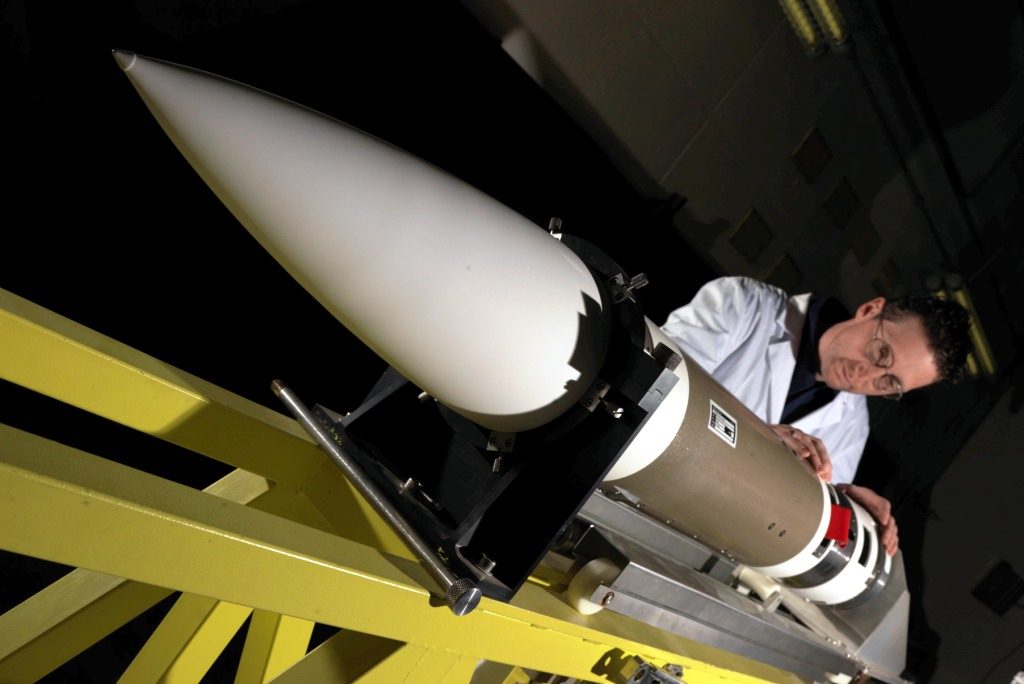
Industry-military cooperation key to Italian missile business
In the mountainous area behind La Spezia we find the CIMA (Centro Interforze Munizionamento Avanzato, for Joint Advanced Ammunition Centre), a navy-led centre with both operational and industrial souls. The CIMA is responsible for the two main Navy ammunition depots in northern Italy, located within its premises, and of a third one closer to the town of La Spezia. However it is better known for its key role in advanced ammunition integration, testing and maintenance, where by advanced ammunition we mean missiles, torpedoes and in the future also artillery guided rounds.
As all facilities dealing with explosives its structures are well spaced in the valley.
EDR On-Line had the chance to be invited for a briefing by the CIMA Director, Capt. Edoardo DI Gennaro, and by MBDA representatives.
Reorganised in its current structure in 2016, the CIMA has a manpower of around 300 elements, the military component being slightly higher than the civil manpower employed under the Ministry of Defence.
Currently the centre is busy in handling activities of countermine charges, MU90, Mk46, A184 and Black Shark Advanced torpedoes, as well as on Aspide, Aster 15 and 30, Teseo Mk 2/A (Otomat Mk2 Block IV), and Marte missiles. As far as missiles are concerned CIMA personnel, military and civilian, are entitled to carry out periodic checks on missiles belonging to the services and, in case of any “no-go”, replace subsystems with spares provided by the missile manufacturer. They can also transform an operational missile into a telemetric missile to be used in live firing campaigns. The CIMA is fully responsible of the configuration management of all missiles on which performs interventions. The Centre is not producing new missiles and is not carrying out Mid-Life Update (MLU) activities, all activities being done uniquely on missiles belonging to the Italian military.
According to data provided by Capt. Di Gennaro in 2023 the CIMA will start a number of new activities; the MU90 torpedo and the Aster 15/30 missiles will start their MLU programme, while the Centre will also start the pyric integration of the Black Shark Advanced and the Dart guided artillery munition.
MLU activities will take place in the MBDA facility located within the CIMA premises, the European missile company being one of the companies working in the MoD facility where maximum security is provided by the military, while top safety measures are enforced both by military and industry.
According to the briefing provided by MBDA representatives, the CIMA is the site where the various inert subcomponents come together with pyric ones, namely the warhead, the motor, and when needed the booster. Historically MBDA has been performing its pyric activities within the CIMA for all its legacy systems, from MILAN to the Teseo/Otomat family, up to the two main lines of production which are currently present in the MBDA facility at Aulla, one dedicated to the Aster family and one to the Marte family. All Aster missiles for the Italian military, currently Army and Navy but in the near future also Air Force, are integrated at Aulla; the same is true for those missiles destined to foreign customers that see MBDA Italia involved in the contract. That said activities concerning the Storm Shadow MLU are also ongoing at that same site. MBDA activities are hosted in building n. 41, the overall covered area being around 2,000 m2.
The process concerning the “noble” part of the missile, the forward one containing the seeker and the guidance systems, is quite complex and is carried out by highly specialised operators. The production inert element comes at the CIMA, it is carried in dedicated blast-proof where it is opened and the dummy warhead is replaced with the active one. Once the system is put back together cables are connected to test benches, also developed and produced by MBDA, personnel leaves the room, the site is secured, colour-code lamps and acoustic signals warning all personnel of the incoming test. The operation is performed in full safety, should a major accident occur one side of the room is designed to vent out the explosion in an area where circulation is forbidden during the test, then the missile head is stored with adequate grounding in order to avoid any possible accidental triggering by electric currents. When maintenance or MLU operations are carried out, things are more complex, as systems must be disassembled, selected components such as o-rings and gaskets, replaced, and tests must then take place on the various components before re-assembling the whole missile head.
The following step is to link up the missile head with propulsion elements. Here too the work is done in the safe rooms available at Aulla, the missile rig being anchored to the floor so that the missile would not budge even if the motor would ignite, according to MBDA representatives.
When testing a missile all elements are taken into consideration, hence the missile radome is inserted into a small anechoic chamber to test the RF seeker, if this is the case.
Safe-rooms are not dedicated to a specific type of missile, hence the site features inherent flexibility and the scheduling can be adapted to production requirements. Asked about the time required for the different operations and the different missiles the answer was elusive as those differ too much from one activity and one product to the other.
Recently a new line was added, dedicated to the CAMM-ER, this missile being at the core of future GBAD systems for both Italian Army and Air Force, the Navy also having shown interest for this new weapon. For the time being test systems and rigs were used during the development phase and the production of the first missiles used for tests, however in the coming years MBDA expects this new line of production further increasing its activities at the CIMA Joint Advanced Ammunition Centre.
Photos courtesy MBDA




